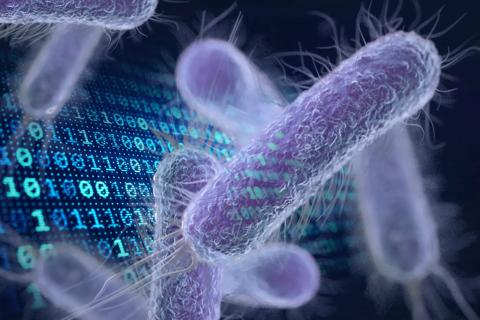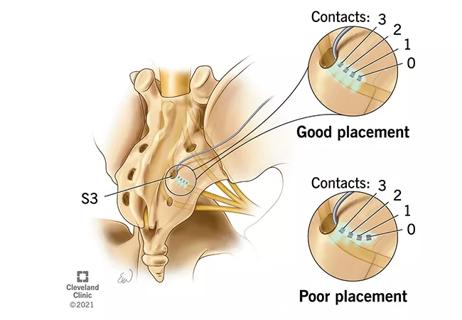Advertisement
Some metabolites may inhibit while others encourage stones

Urinary metabolites such as oxalate and citrate play a significant role in urinary stone formation. But are there other metabolites that protect patients from developing stones? Few investigations have explored the possibility that we may be broadly losing the metabolites that protect our health.
Advertisement
Cleveland Clinic is a non-profit academic medical center. Advertising on our site helps support our mission. We do not endorse non-Cleveland Clinic products or services. Policy
Recently, though, Cleveland Clinic researchers employed high-throughput metabolomics of the urine to explore this question in a cohort that included 18 urinary stone disease (USD) patients and 31 healthy controls. Through this study, they identified more than two dozen additional metabolites that may play a role in the pathophysiology of urinary stone disease. Surprisingly, over 75 percent of the metabolites that differed between the two groups were enriched in healthy patients, indicating that there is a protective effect of metabolites that patients with USD are missing.
“This is the first study to compare the urinary metabolomic profile of patients with or without urinary stone disease,” says urology fellow Andrew Nguyen, MD, who presented the study at the 2018 American Urological Association annual meeting in San Francisco. “These data can be used as a foundation for diagnostic and therapeutic applications to help prevent stone formation.”
Dr. Nguyen and his co-authors used liquid chromatography and mass spectrometry to separate, analyze and identify the metabolites in the samples. “We identified the metabolites that were differentially abundant in the two cohorts,” says Aaron Miller, PhD, project scientist with Lerner Research Institute and principal investigator on the study. “That told us that perhaps some of these metabolites are doing something to prevent or inhibit stone formation.” Manoj Monga MD, Director, Endourology and Stone Disease, participated in this study.
While they were not able to classify all of the metabolites, they did find some interesting pathways that were enriched in patients with stones: Phase II conjugation, glutathione synthesis and conjugation, and biological oxidation. They plan to examine these pathways in future mechanistic studies.
The researchers say urologists could one day use this urine analysis technique instead of imaging as a surveillance tool in patients prone to developing urinary stones.
“Typically, urinalysis looks at specific factors like oxalate and other substances, which are more indicative that the patient is at risk for stones,” says Dr. Miller. “For instance, oxalate is present in 80 percent of stones. So, higher levels of urinary oxalate increases the probability of stone formation. Urine pH is another factor. Uric acid, cysteine and calcium oxalate stones form more frequently in urine with low pH, whereas struvite and calcium phosphate stones form more frequently in high pH urine.”
“But,” he adds, “given the fact that the stones themselves are composed of these complex metabolites and proteins and given the fact that our metabolomic approach is highly sensitive, we could potentially pick up a signature of active stone presence that is different from known risk factor metabolites.”
This study was part of a larger research effort examining how gut and urinary microbiomes are integrated. “We’re trying to figure out what’s going on in patients with stones in terms of the bacteria that inhabit their gut and their urine,” Dr. Nguyen says. “So we’re trying to integrate these metabolomic results with our microbiome results and come up with an overall picture of what makes some people develop stones.
Advertisement
“Moving forward, we’ll be looking at ways to manipulate the microbiome to be more anti-stone forming, whether that’s through diet, probiotics or a synbiotic that would combine the two.” A synbiotic is a mix of probiotic bacteria and prebiotics, dietary or supplemental compounds that can modify the gut microbiome.
Eventually, he says, physicians would like to be able to suggest dietary changes that could increase metabolites in urine that inhibit stone formation. “For a long time, the thinking has been the urinary tract is sterile except in the case of infections,” Dr. Miller says. “Our data clearly show that urinary stone disease is more associated with the loss of bacteria and their function than the acquisition of infection.”
View Dr. Nguyen’s biography and those of our other residents and fellows.
Advertisement
Advertisement

Up to 3 days faster than waiting for urine culture results

Review the advantages and disadvantages of newer interventions

Pioneering and refining the approach in pyeloplasty, nephrectomy and more

Unlike earlier pills, new drugs do not cause liver toxicity

Male factors play a role in about half of all infertility cases, yet men often are not evaluated

Hadley Wood, MD, shares her vision as the new editor-in-chief of Urology

Study leverages data from the ROSETTA trial

More on the procedure and the institutional experience